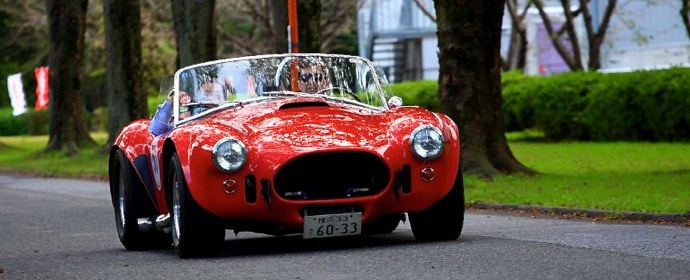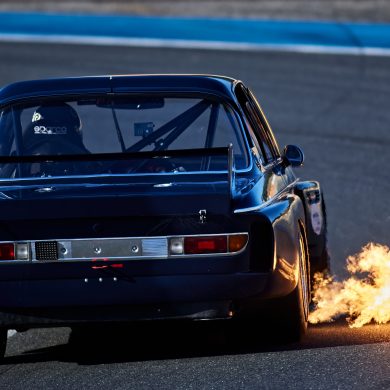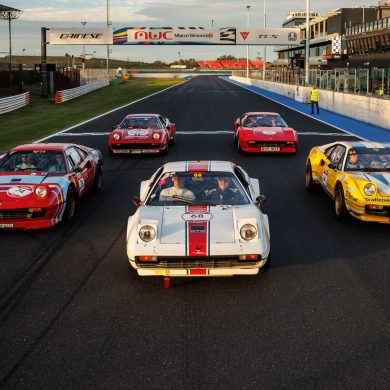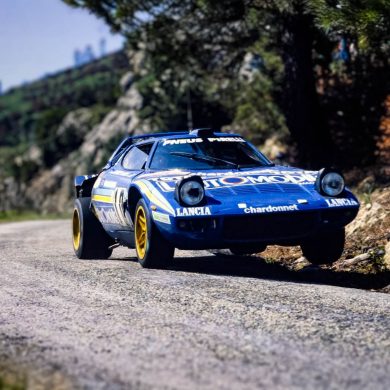Rally Nippon 2011 – From Japan’s Modern to Ancient Capitals
Report and photos by Len Clarke
The 2011 running of Rally Nippon, quickly establishing itself as the last big event on the historic calendar here, went from Tokyo to Kyoto, making stops at some of the country’s most beautiful temples and shrines along the way.
First held in 2009, Rally Nippon has gained a remarkable amount of notoriety in the short time since its debut, and annually attracts some of the finest vintage cars in the country – and this is a nation with an almost unrivalled collection of the finest cars in existence.
The competitive distance of this year’s event was approximately 888km, though reaching the stages and getting back to the accommodation at the end of each day meant the drivers covered closer to 1200kms over the course of the event – not including the 500+km trek back to Tokyo after the finish for those entrants from the eastern side of the country!
The 3rd running of Rally Nippon began at one of Japan’s most famous locations, Yasukuni Jinja in central Tokyo. The start was conducted in excellent weather, cloud cover providing perfect light for the seventy cars competing on the four-day contest.
Assembled among the stone lanterns, the works of automotive art were on display to the public before each was blessed by a Shinto priest on the starting ramp.
Rally Nippon 2011 featured an eclectic mix of machinery: everything from the standout Bugattis and Bentleys of the 1920s – right up to domestic machinery from as late as 1974. It’s this diversity that proves to be most interesting – and something of an antidote to other events featuring cars of the same calibre, in which we generally see far fewer Japanese-made entries.
Obviously, legendary European machinery made up the lion’s share of the list, though alongside them the small grouping of genuinely interesting Japanese beauties from the youngest period of the entry bracket created quite a stir.
To that end, I’m fully expecting one of my favourite Japanese cars of all time, Mazda’s Cosmos (the maker’s first model to use the Wankel rotary engine) to make an appearance next year. I can hardly think of a more appropriate Japanese car for this event.
Back to more familiar territory and the trio of Jaguar SS100s, which were a knee-buckler early on; though I’d be lying if I didn’t acknowledge the Maserati 450S (another absolute favourite – one of the most desirable cars on the rally in my opinion), sat amongst the exemplary early examples from Aston Martin and Ferrari, among others.
However, it was the 1952 Lancia Aurelia B20 GT that had me swooning. Seeing what is arguably the origin of the GT breed was a huge treat in my opinion. Sadly, this beauty didn’t make it through the event, retiring early on, to the dismay of many…
The pace of Rally Nippon 2011 was surprisingly quick, being as it was a ‘regularity’ rally. Don’t let the age of the cars fool you, the drivers weren’t hanging around!
Organization of the event was world-class, and each night’s accommodation a pleasure after the typically long days.
On the stages, the locations for rest stops couldn’t have been better chosen. Among them, Sunday morning’s visit to Ise Jingu (Ise Grand Shrine) was absolutely breathtaking. This shrine is an amazing 2015 years old, and only the Emperor and his family are allowed inside its hallowed grounds. The pictures show the area outside the main shrine buildings – themselves particularly impressive.
Obligations in Tokyo meant I had to leave at the end of the third day of the rally, though the visit to Taga Taisha (a Buddhist temple and a Shinto shrine that exist on the same site) dating from 620 was the perfect way to end my glorious sojourn with the cavalcade of machinery I had so happily followed.
Next year’s route hasn’t yet been finalized, but the direction will be the opposite to this year’s running, beginning in Kyoto and ending in Tokyo.
With the organizers eager to increase the number of foreign entrants, a car rental scheme is currently being worked out for those overseas guests who may be thinking of taking up the challenge.
It’s no wonder this event has gained such a reputation in the short time it has been in existence – the cars, locations, backroads, sights and sounds simply cannot be beat. It’s quickly becoming the most enjoyable historic rally in Japan. Bravo!
[envira-gallery id=”143219″]











wished there was more of the scenery, must have been some great views
Loved reading and seeing photos of events in Japan where there are so many wonderful cars hidden away (I know because I lived there for several years). Looking forward to the next article from Len.